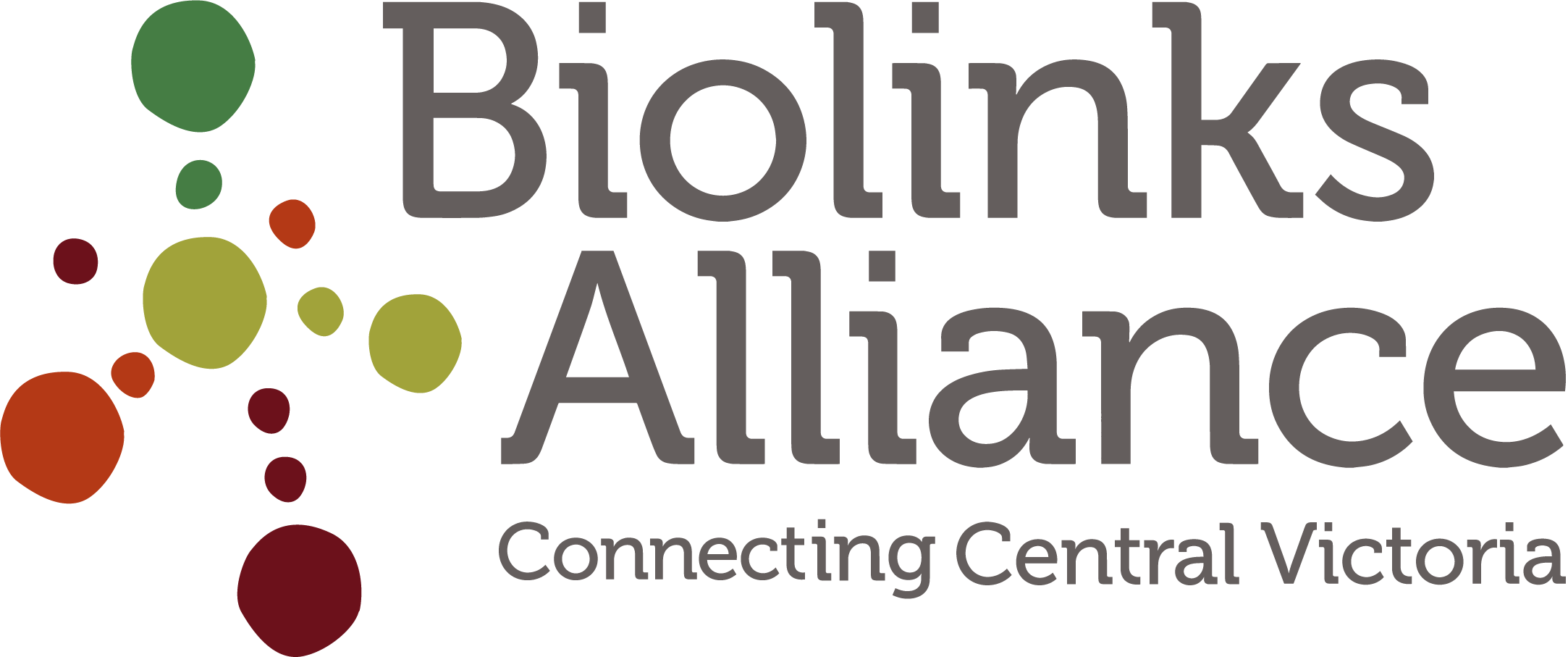"Australia's great wildlife migrations: Restoring habitats for Nomadic Nectar-feeding birds and bats
In March 2019 Biolinks Alliance hosted the visit to Central Victoria of leading conservation biologist, Dr Peggy Eby, who received an enthusiastic response to her inspiring talk.
The sell-out audience in the historic Capital Banquet Room in Bendigo heard Dr Eby tell the wonderful story of Australia’s unique, but little-known, wildlife migrations. She laid out her ground-breaking research which reveals that honey-eating birds and bats fly vast distances across the continent tracking nectar-rich bushlands as they flower.
Dr Eby told us about a particular Grey-headed Flying Fox that she tracked early in her research. In one night, this animal flew over 70ks to three widely spaced foraging sites, and then back again to its roost by morning.
It turns out such heroic night-time expeditions are pretty typical for the species and are also doing good. Flying foxes spread pollen from one isolated patch of bush to another, increasing genetic diversity, and boosting the resilience of our bushlands and forests to climate change.
Dr Eby’s talk showed that Grey-headed Flying Foxes are climate and habitat loss “refugees”. They have taken up residence in Bendigo, and other urban areas, in response to a warming climate and the destruction of their preferred habitat elsewhere.
Her research has identified the vital importance of very small areas of winter-feeding habitat.
Only a handful of the nectar-producing plants that flying foxes rely on blossom regularly in winter, causing winter feeding ‘bottlenecks’. These winter bloomers ensure the animals do not starve. But very few small patches of them remain, and mostly on privately-owned land.
She reminded us that other nomadic nectar-feeding wildlife – particularly threatened native birds like Regent Honeyeaters and Swift Parrots - have also suffered massive reductions in their numbers. The warming climate, habitat destruction and the winter-feeding bottleneck are contributing to their rapid decline as well.
The great news is that Dr Eby’s research shows how we can help these species survive and flourish. She told the audience that bushland “restoration and repair is an idea whose time has come”.
She urged us to prioritise planting “the species and the habitats that provide food during ‘bottlenecks’”, pinpointing 8 species of eucalypts and melaleucas which appear to support nectar-dependant birds and bats in winter in SE Australia.
The behaviour of nectar-eating flying foxes and birds is telling us an important story and we need to listen and respond to their message. As Dr Eby said we must protect, restore and reconnect habitat over vast distances – scaling- up our local efforts in a coordinated and strategic fashion, and “Biolinks Alliance is the prime avenue… to do this work in Victoria…” she said.
Dr Eby has researched the movements and behaviour of Grey-headed Flying Foxes for more than 25 years, tracking their dynamic movement patterns across the country in response to habitat availability and climatic conditions.
Her current scientific interests include conservation of large-scale habitat connectivity for nomadic pollinators; the influences of behavioural responses to environmental change on human-bat conflict in urban areas; understanding the ecological drivers of disease emergence in Australian flying foxes; and using strategic habitat restoration to reduce disease risk and human-bat conflict.
Dr Eby holds an adjunct position at UNSW, runs a private consultancy business and holds formal and informal advisory positions with various government agencies.
Dr Eby also works with the US Center for Large Landscape Conservation on the Habitat for Health program, a National Science Foundation-funded initiative to restore key habitat for bats on private and public land.
Dr Eby has also undertaken significant work communicating the outcomes of her research to the scientific community, wildlife managers, land managers and stakeholder groups. She is author, or co-author, of more than 35 research publications on aspects of Flying Fox biology and ecology. She is co-editor of Managing the Grey-headed Flying-fox as a threatened species in NSW published by the Royal Zoological Society of New South Wales.
She has also explained the ecology of flying foxes to general audiences across Australia, appearing on the ABC’s science program Catalyst and in numerous radio, on-line and newspaper news items, as well as writing for The Conversation.
Dr Eby undertook her zoology degree in Colorado US, and her PhD at the University of New England. She is a Fellow of the Royal Zoological Society NSW, a recipient of a Bat Conservation International Award as well as a T.J. Watson Fellowship for International Study.
We gratefully acknowledge the generous support given for this event from the Helen Macpherson Smith Trust and the City of Greater Bendigo.
